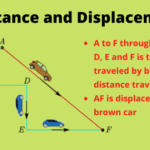In the context of physics and fluid dynamics, terms like “air pressure” and “atmospheric pressure” often come up. While these terms are commonly used interchangeably, subtle distinctions exist between these two terms.
This article aims to explain these differences by giving their definitions, explaining how they are used, and pointing out when the difference is important.
Definitions
Air Pressure
Air pressure is a more general term that refers to the force exerted by air per unit area on any surface. It is not limited to the Earth’s surface but can be applied to describe the pressure inside a container, an aeroplane cabin, or even an inflatable balloon.
\[
\text{Air Pressure (P)} = \frac{\text{Force (F)}}{\text{Area (A)}}
\]
Atmospheric Pressure
Atmospheric pressure specifically refers to the force per unit area exerted against a surface by the weight of the air above that surface, in the context of Earth’s atmosphere. In essence, it’s a type of air pressure but is specifically relevant to outdoor, ambient conditions.
\[
\text{Atmospheric Pressure (P)} = \frac{\text{Weight of Column of Air Above Surface}}{\text{Area (A)}}
\]
Applications of Air Pressure and Atmospheric Pressure
Air Pressure
1. Industrial Processes: In pneumatic systems, understanding air pressure is essential for controlling airflow.
2. Medical Equipment: Devices like ventilators rely on the principles of air pressure.
3. Aviation: Cabin pressure in aeroplanes is a form of air pressure.
Atmospheric Pressure
1. Weather Forecasting: Atmospheric pressure is crucial for predicting weather patterns.
2. Altimetry: Used in navigation and hiking equipment.
3. Fluid Dynamics: Understanding natural phenomena like ocean currents.
Key Differences Between Air Pressure and Atmospheric Pressure
1. Scope: Air pressure has a broader application, whereas atmospheric pressure is specifically about Earth’s atmosphere.
2. Units: Both are measured in pascals (Pa) but atmospheric pressure commonly has standard values, like 1 atm or 101,325 Pa.
3. Context: Air pressure is relevant in both natural and controlled environments. Atmospheric pressure is primarily outdoor, ambient pressure.
Differences Between Air Pressure and Atmospheric Pressure in Tabular Form
| Criteria | Air Pressure | Atmospheric Pressure |
|---|---|---|
| Definition | Force per unit area exerted by air on any surface. | Force per unit area exerted by the weight of the air above a surface in Earth’s atmosphere. |
| Scope | Broader, applies to any environment where air is present. | Specific to Earth’s atmosphere, mostly outdoor and ambient conditions. |
| Context | Natural and controlled environments like industrial processes, medical equipment, and aviation. | Primarily relevant to outdoor, ambient conditions such as weather forecasting and altimetry. |
| Units | Measured in pascals (Pa), but can vary based on the system. | Commonly measured in pascals (Pa), atmospheres (atm), or millibars (mb). Standard atmospheric pressure is 101,325 Pa or 1 atm. |
| Applications | Pneumatic systems, ventilation, aviation, medical devices. | Weather forecasting, altimetry, fluid dynamics, and natural phenomena like ocean currents. |
| Relationship to Altitude | Generally decreases with an increase in altitude but can be controlled in closed systems. | Decreases with an increase in altitude, cannot be controlled. |
Questions and Answers
Can atmospheric pressure be considered a subset of air pressure?
Answer: Yes, atmospheric pressure can be considered a specific type of air pressure that relates to Earth’s atmosphere.
How do high-altitude locations affect atmospheric and air pressure?
Answer: Both atmospheric and air pressure generally decrease with an increase in altitude.
Is atmospheric pressure the same everywhere on Earth?
Answer: No, atmospheric pressure varies based on altitude, temperature, and weather conditions.
What units are commonly used to measure atmospheric pressure?
Answer: Common units include pascals (Pa), atmospheres (atm), and millibars (mb).
Further Reading
1. Pressure and its applications in daily life
2. Applications of Atmospheric Pressure in Daily Life
To sum up, while atmospheric pressure is a specific type of air pressure related to Earth’s atmosphere, air pressure has broader applications and can describe various systems and conditions. Understanding this distinction becomes important in specialized fields like meteorology, aviation, and industrial processes.




